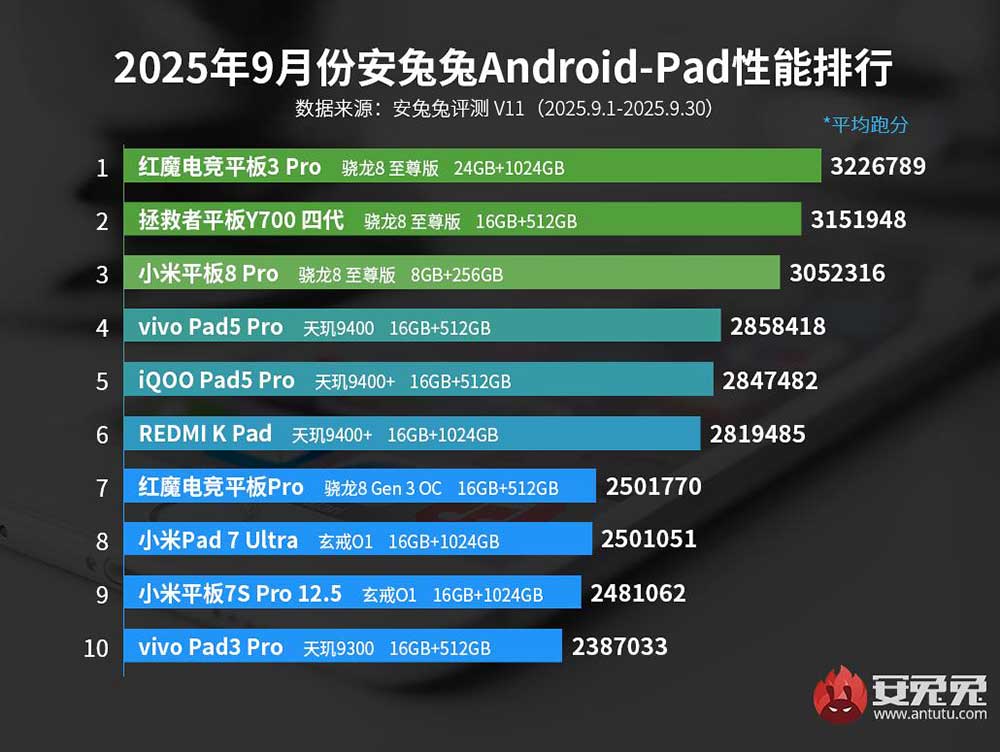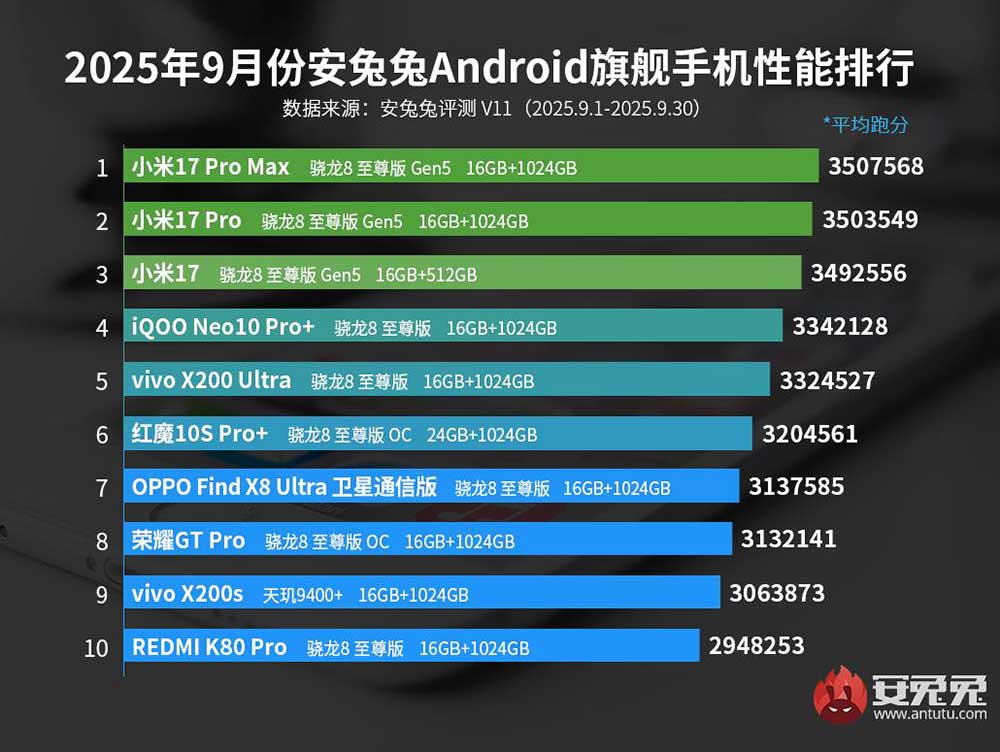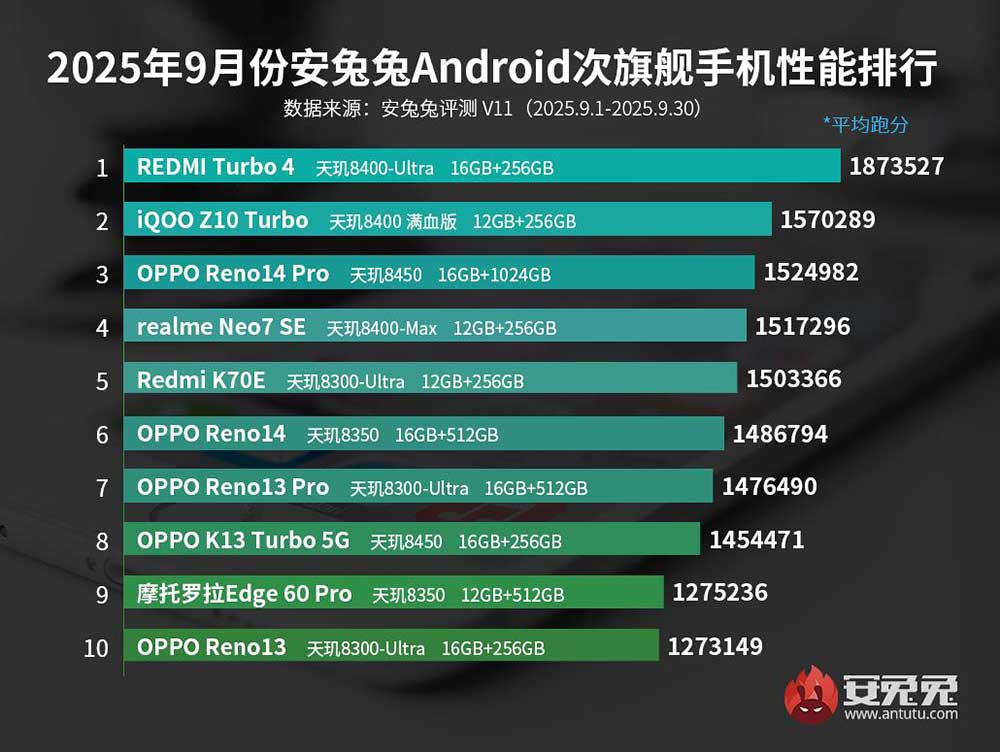Antutu just dropped its performance rankings for September 2025, and this isn’t just a simple monthly update. Last month’s lists mark the official debut of Antutu version 11 — a major benchmark overhaul that renders all version 10 scores obsolete. More importantly, it introduces the first Android devices powered by the new Qualcomm Snapdragon 8 Elite Gen 5.
The transition is brutal. We’re no longer talking about 2.9 million points at the top, but about a new performance ceiling that blows past 3.5 million.
Top 10 flagship smartphones
The narrative in the high-end market has been completely reset, thanks to a new chipset and an aggressive early launch by Xiaomi. Qualcomm’s top-of-the-line Snapdragon 8 Elite Gen 5 has instantly taken the top three spots, showcasing a raw performance leap unseen in months.
The new performance king is the Xiaomi 17 Pro Max, which annihilated the competition with an average score of 3,507,568. Hot on its heels are the Xiaomi 17 Pro (3,503,549) and the standard Xiaomi 17 (3,492,556). The nearly identical scores across the lineup confirm that Xiaomi has done an incredible job cooling and optimizing the Snapdragon 8 Elite Gen 5 chip, regardless of form factor.
This clean sweep by the Xiaomi 17 Series effectively wipes the August leader, the Snapdragon 8 Elite-powered RedMagic 10S Pro Plus, off the map, underscoring just how massive the generational performance jump is with the Gen 5 silicon. The rest of the list is now scrambling to catch up, with the previous-gen flagships fighting for the remaining seven spots.
Top 10 sub-flagship smartphones
While the premium tier is currently being rocked by a new Qualcomm processor, the sub-flagship category remains a familiar hunting ground for MediaTek. The Dimensity 8400 series continues its reign, having thoroughly optimized its presence before the next wave of midrange chipsets arrive.
This month, there’s an internal shakeup at the top, but the mobile platform remains the same. The Redmi Turbo 4 with Dimensity 8400-Ultra climbs to the top spot with an Antutu V11 score of 1,873,527. It edges out the powerful iQOO Z10 Turbo (1,570,289) and the OPPO Reno14 Pro (1,524,985).
The continued dominance of the Dimensity 8400, which powers the bulk of the top-performing midrangers, proves that MediaTek currently holds the crown for delivering performance-per-dollar (or peso) consistency. With new sub-flagship SoCs from both Qualcomm and MediaTek still on the horizon, we don’t expect much movement here until the end of the year.
Top 10 tablets
The tablet chart is now showcasing the new Antutu V11 scores applied to the powerful, but technically last-gen, processors. The hardware leaders haven’t changed yet, but their numbers are eye-popping.
The RedMagic Gaming Tablet 3 Pro, globally launched as the RedMagic Astra Gaming Tablet, retains its title as the most powerful Android tablet available, leaping to a massive V11 score of 3,226,789 — a rating that would have made it the second-best phone in the V10 era. The gaming-focused device is followed by the Lenovo Legion Y700 Gen 4 (3,151,948) and the new entry, the Xiaomi Pad 8 Pro (3,052,316).
The Xiaomi Pad 8 Pro is notable as the first tablet on the list preinstalled with the new Xiaomi HyperOS 3, and its immediate third-place ranking shows strong performance optimization out of the gate. For now, the top of the tablet list is an all-Snapdragon 8 Elite club, but expect this ranking to be shattered once the first tablets with the Snapdragon 8 Elite Gen 5 finally make their debut.

Share this Post





